- Joined
- Jun 17, 2011
- Messages
- 2,062
A friend of mine made one of these a few months ago. I thought he meant something you attach to the carriage so you could drill sideways through the work held in the headstock. Turns out, it is intended to hold a chuck or tapered-shank drill bit on the carriage so you can drill longitudinally into the work spinning on the headstock. Confused yet?
I started with a block of steel 3" x 2 1/2" x 2" and notched it to mount in the four-way toolpost. Then I drilled and bored it to hold an R8-to-MT3 adapter I had on hand.
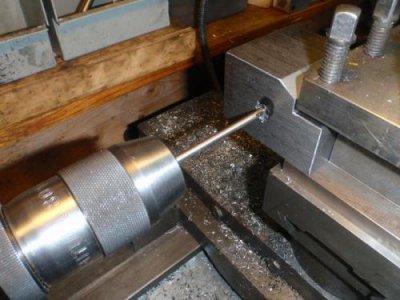
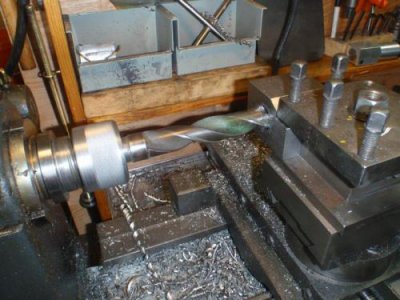
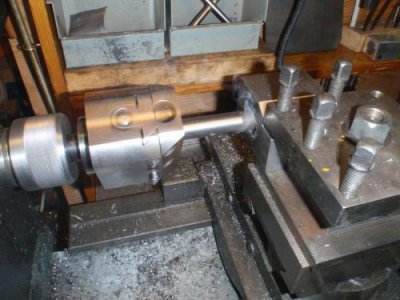
Two comments at this point. First, if you don't have a boring head, consider getting one. Normally used on a mill, they can be useful on a lathe. Second, if you are boring into a piece on the carriage, or using the drilling adapter, you will need a crossfeed lock. If you don't already have one, add one. It can be as simple as replacing one gib screw with a setscrew that can easily be tightened and loosened.
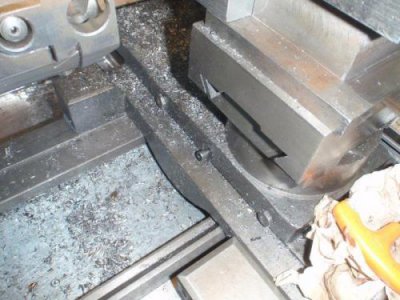
Once the block was bored to a snug slip fit for the MT3 adapter, it was drilled and tapped to take two 3/8" SHCSs. Then on to the horizontal mill to slit in to the bored hole.
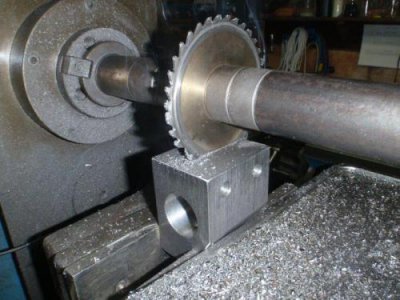
The drilling adapter is used as shown to hold a tapered-shank bit ...
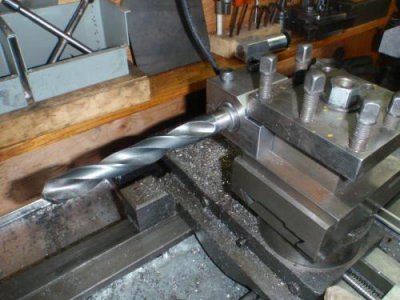
Or a chuck - anything on an MT3 shank, including the boring head.
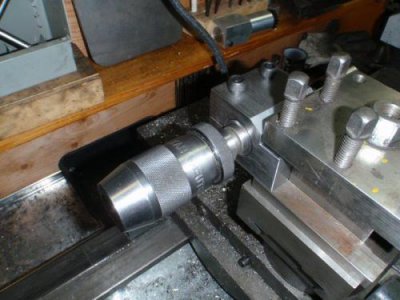
Now, if you're wondering why bother, when I'm drilling a really deep hole through stock held in the spindle, it takes a lot of cranking to move the bit in and out of the work to clear chips and add oil. The crank on the carriage is a lot faster, plus, I can now use power feed when it's appropriate.
I started with a block of steel 3" x 2 1/2" x 2" and notched it to mount in the four-way toolpost. Then I drilled and bored it to hold an R8-to-MT3 adapter I had on hand.



Two comments at this point. First, if you don't have a boring head, consider getting one. Normally used on a mill, they can be useful on a lathe. Second, if you are boring into a piece on the carriage, or using the drilling adapter, you will need a crossfeed lock. If you don't already have one, add one. It can be as simple as replacing one gib screw with a setscrew that can easily be tightened and loosened.

Once the block was bored to a snug slip fit for the MT3 adapter, it was drilled and tapped to take two 3/8" SHCSs. Then on to the horizontal mill to slit in to the bored hole.

The drilling adapter is used as shown to hold a tapered-shank bit ...

Or a chuck - anything on an MT3 shank, including the boring head.

Now, if you're wondering why bother, when I'm drilling a really deep hole through stock held in the spindle, it takes a lot of cranking to move the bit in and out of the work to clear chips and add oil. The crank on the carriage is a lot faster, plus, I can now use power feed when it's appropriate.

